Honor Magic VS review: semi-affordable foldable
Slimline foldable gets a beefier CPU and bigger battery for its European debut
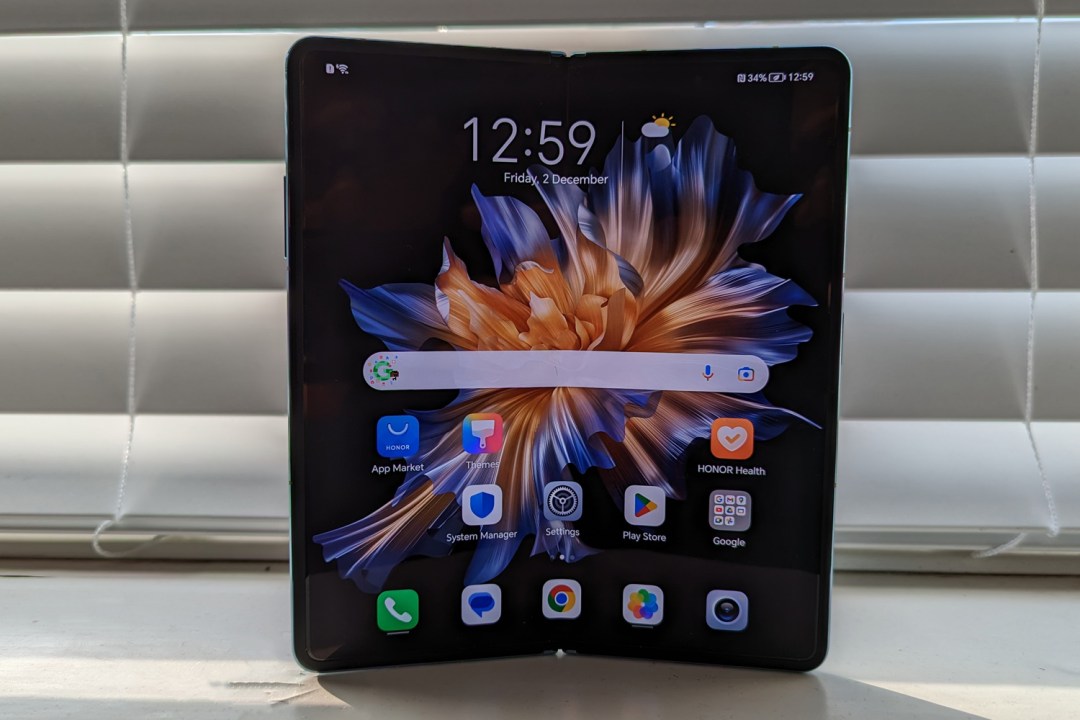
It’s still early days for the tech, but book-style foldables seem to be where the premium end of the phone world is headed. Samsung leads the charge with its Galaxy Z Fold line-up, although it’s not alone. Honor joined the party early last year with the China-only Magic V, and came back for a second attempt very soon after. That phone was the Honor Magic Vs, and after a few months’ wait it’s finally heading to the wider world.
More of a mid-life update than an all-new model, the Vs adds a bigger battery and more powerful hardware while keeping the same trio of competent cameras and inward-folding OLED display as before. It’s about as high-end as an Honor phone gets – while still undercutting its biggest competition by a considerable figure. But given it effectively uses year-old components, can it do enough to ruffle feathers over at the Samsung factory?
Design & build: goodbye gap
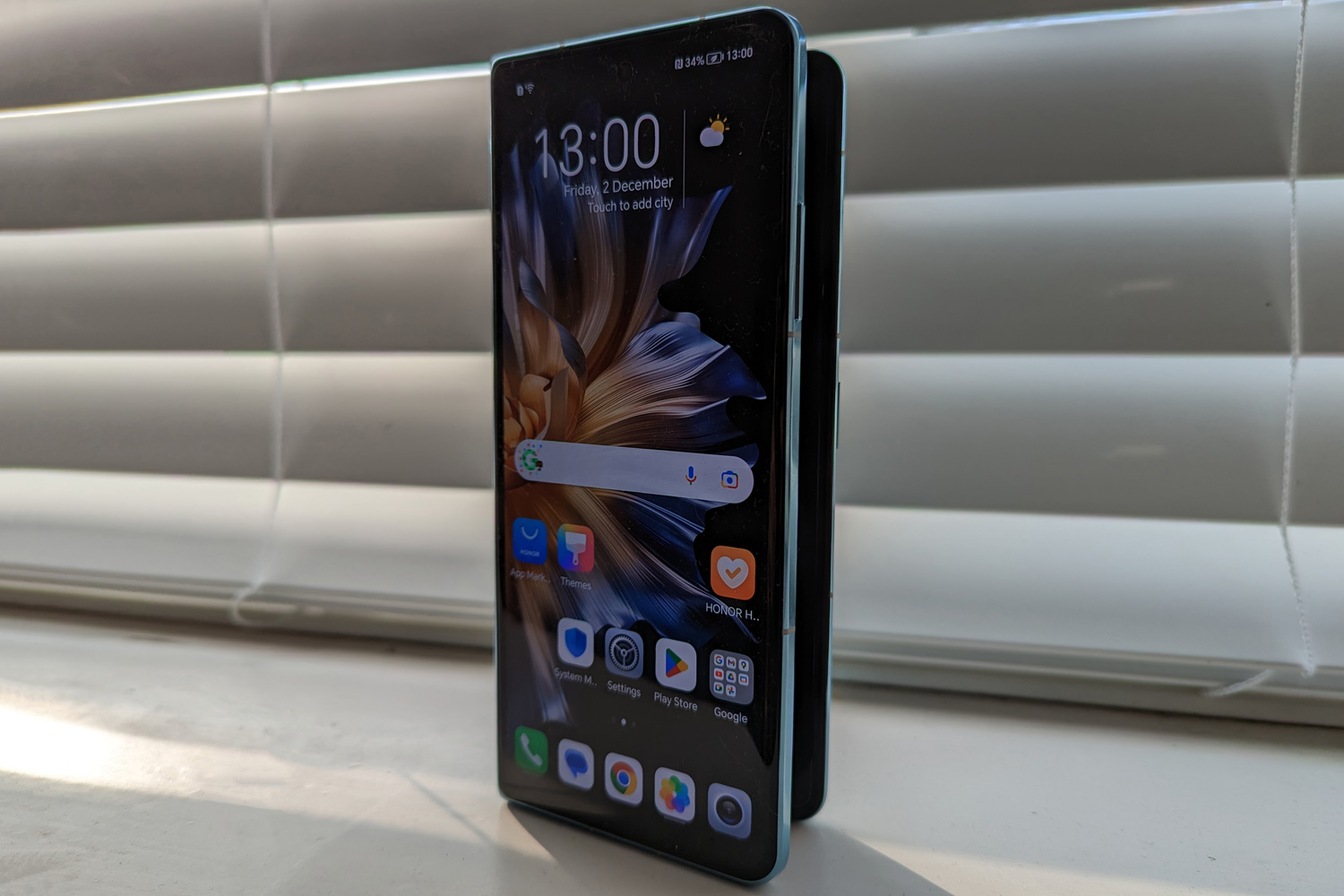
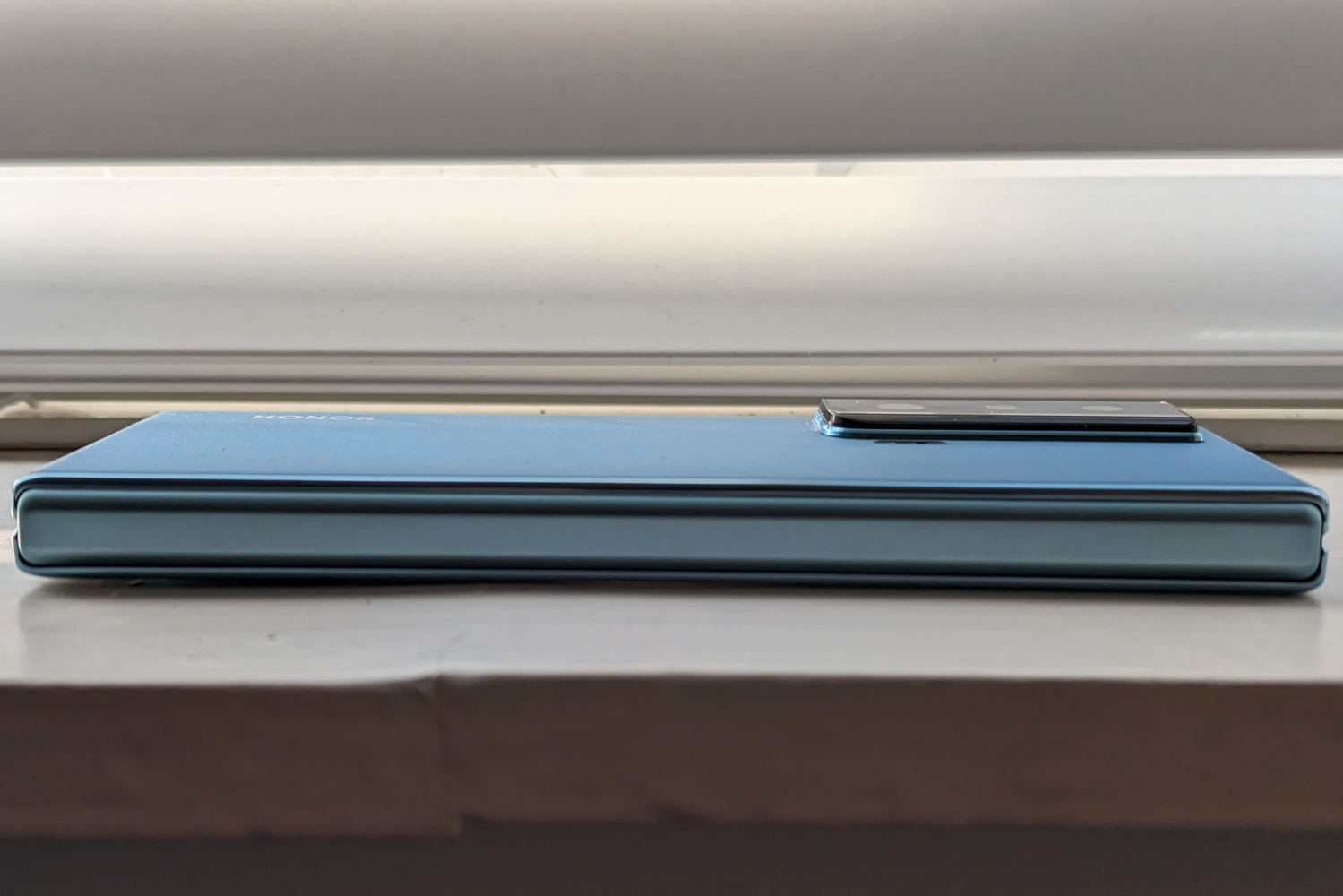
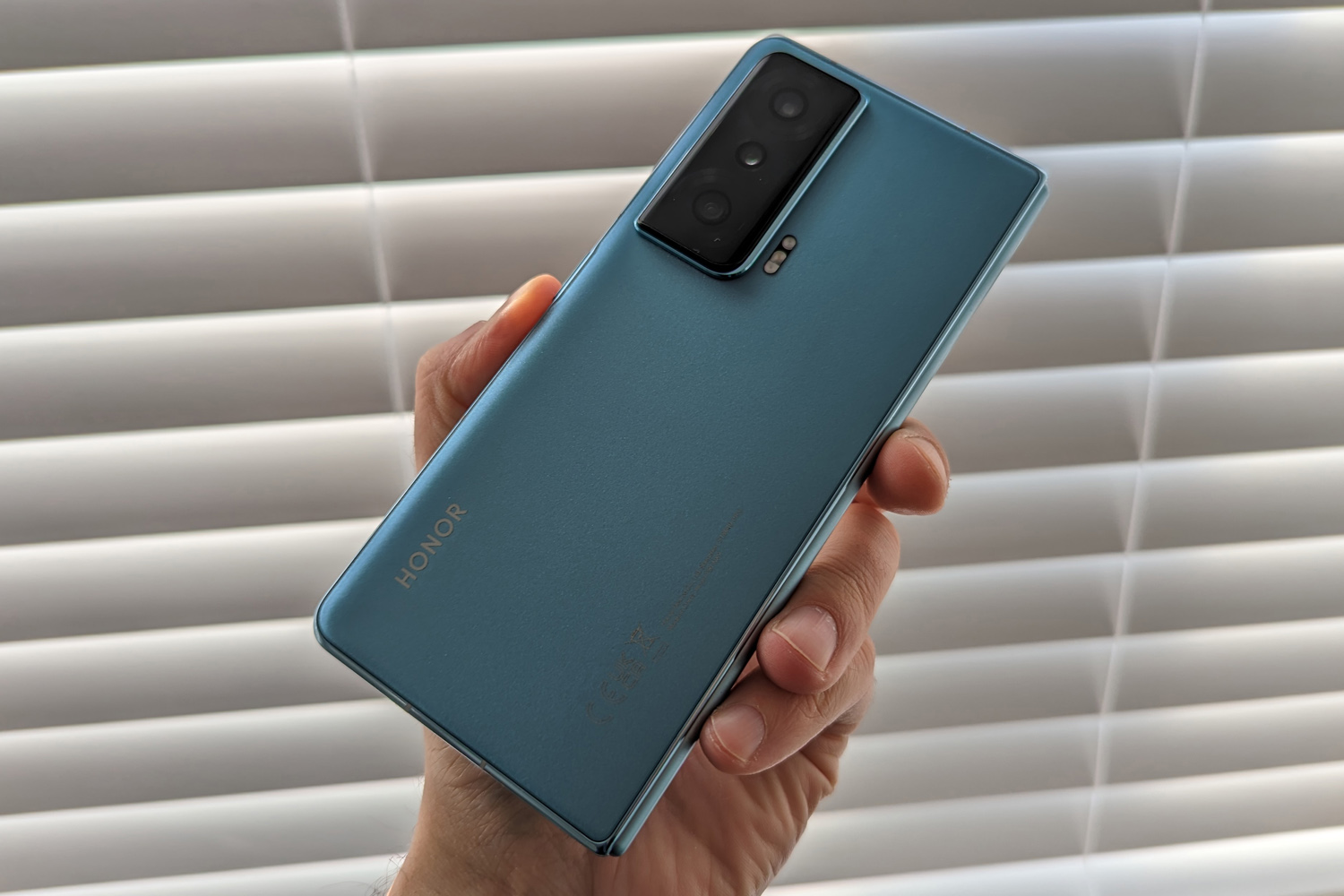
At a scant 12.9mm when folded shut, the Magic Vs is a few millimetres thinner than the Galaxy Z Fold 4, and weighs less too. The outer display also uses a more traditional 21:9 aspect ratio, rather than the skinnier screens seen on Samsung’s Galaxy Fold phones. Add in the redesigned hinge, which lets the two halves close shut with no gap, and it feels more like using a regular-non-folding phone before you open it up. Not entirely – but still an improvement.
There’s the usual mix of metal and glass holding it all together, with a mirror-like finish on the frame and a textured matte on the rear that’s not quite as slippery as regular glass. You’ll still want to keep a good grip on it, though. The rear camera module sticks out a fair amount, but has rounded edges so as not to catch on your clothes when pulling the phone out of a pocket.
The hinge opens smoothly, feels sturdy enough when opened part-way, and has no visible seam gap at either end. Honor reckons the mechanism is good for 400,000 folds, or ten years of typical use, although we’re barely 0.001% of the way towards testing that claim. What we do know is that the inner screen’s crease is still visible if you go looking for it, although it doesn’t stick out in regular use.
You’ve got the option of a side-mounted fingerprint sensor, which is quick to detect your digits, or you can rely on face recognition to bypass the lock screen. Unsurprisingly for a modern flagship, there’s no 3.5mm headphone port, and the dual-slot SIM card tray doesn’t play nicely with microSD cards. That means the 512GB of on-board storage is all you get.
Screens & sound: golden ratio
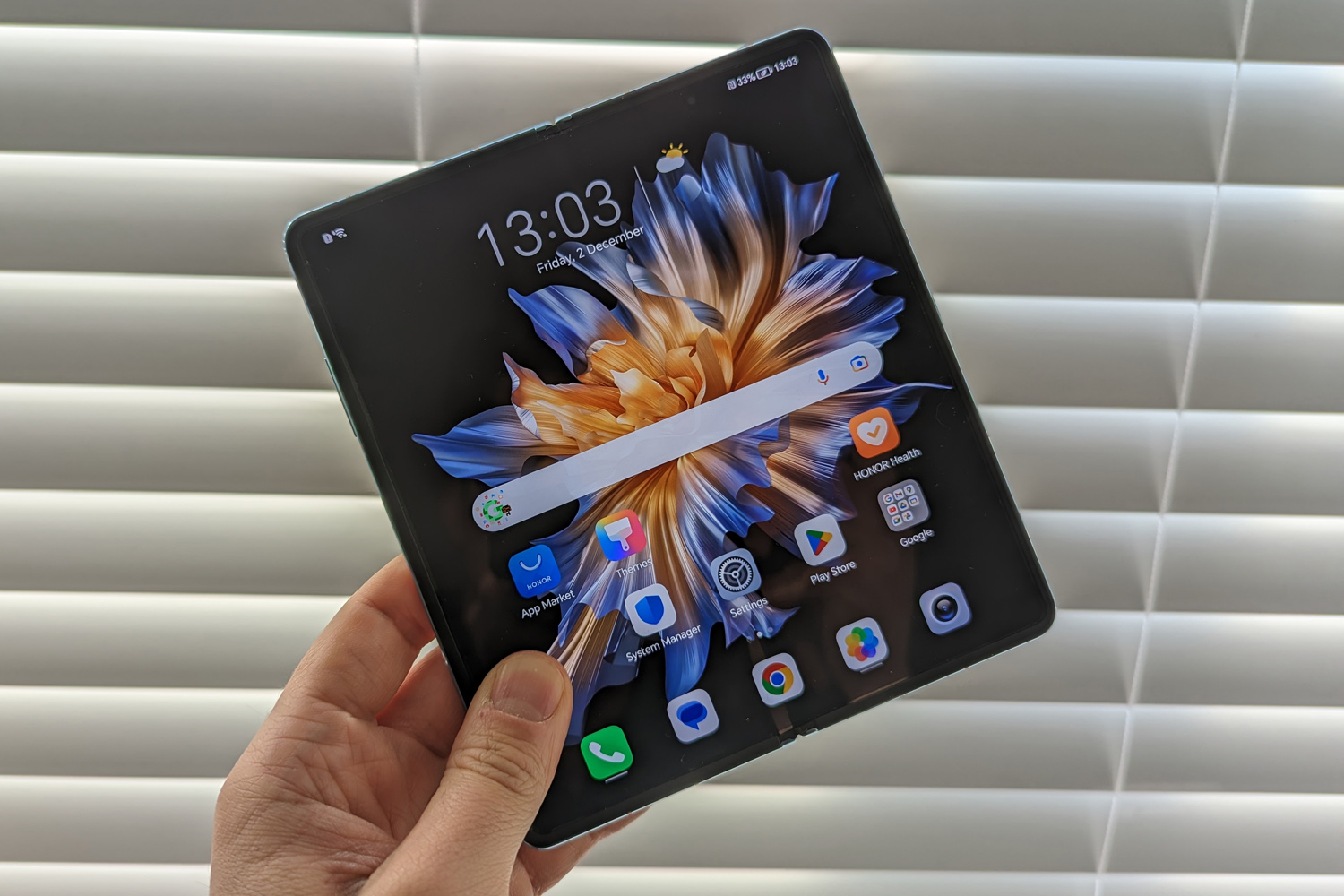
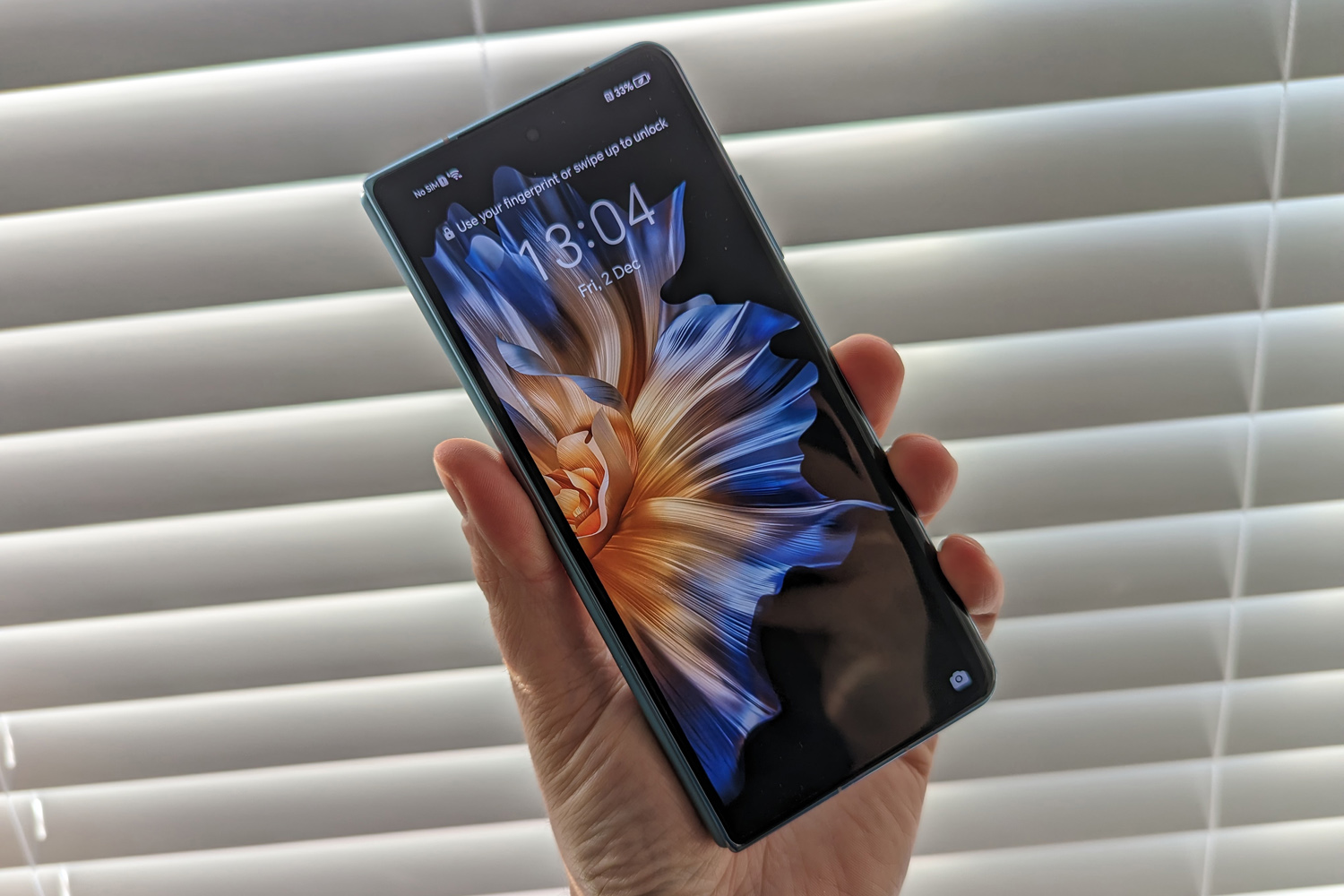
It’s clear from the spec sheet that the Magic Vs is a phone-first sort of foldable. Size and resolution aside, the outer display seems to be the superior screen, with a higher refresh rate (120Hz to the inner screen’s 90Hz) and better brightness (1200nits to the inner one’s 800). The 1080p resolution OLED looks the business, with a thumb-friendly 21:9 aspect ratio and wonderfully vibrant colours.
The inner display is a not-quite-square 7.9in, with a 2272×1984 resolution. It has excellent viewing angles, equally punchy colours, and doesn’t feel overly plasticky like some foldables we’ve tried. The coating does a decent job of minimising reflections, even outdoors in bright sunshine. You can still feel the crease as you run your digits over it, but it’s a subtle sensation.
Both screens support HDR10+ videos, with clear highlights and deep shadows helped by inky blacks from the OLED panels. There’s also stylus support now, something that was absent on the OG Magic V, although we didn’t have one available to test during our time with the phone.
It’s a shame Honor has restricted refresh rate on the internal screen, as it puts the phone on the back foot compared to the latest Galaxy Fold. That said, we found ourselves using the outer screen a lot more here anyway, thanks to the wider aspect ratio, and only swapping to the inner display for watching videos, reading or multitasking.
Performance & software: bit on the back foot

When it launched in China, the Honor Magic Vs was packing one of the most powerful mobile CPUs doing the rounds. Qualcomm’s Snapdragon 8+ Gen 1 will still absolutely blitz just about anything in the Google Play Store, be it apps or games, and can manage multitasking without breaking a sweat. Which is handy for a foldable, where doing two things at once on the larger internal display is a big part of the appeal.
That said, non-folding rivals now have even juicier Snapdragon 8 Gen 2 chips inside. These run cooler and are more energy efficient, while also delivering more gaming grunt. Closest competitor Samsung likely won’t arrive with a new Galaxy Fold until July or August, though, and flip-style foldables like the Oppo Find N2 Flip are using MediaTek silicon. That gives Honor a slim window where it can compete with existing book-style rivals.
We saw no signs of stutter or slowdown while swiping between home screens, loading our go-to apps and browsing the web. Games ran smoothly at good frame rates, even with most detail settings cranked, and apps don’t need to redraw very often even when you’ve got several on the go at once.
Side-by-side split screen uses a pop-out shortcut bar, and floating windows are a useful way to multitask, although it’s shame not all apps support a horizontal split as well as the vertical one used by default. You don’t get the app dock Google introduced with Android 12 (and Samsung adopted for the Galaxy Z Fold 4), but once you get the hang of the shortcut system it’s easy enough to use two apps at once on the inner screen.
As we’ve experienced in other Honor phones recently, the firm’s software offering lags behind its now flagship-grade hardware. The Magic Vs has an abundance of pre-installed apps, a lack of homescreen customisation, and visual bugs in important places like the camera app. Our review unit was running pre-release software, but in the months between receiving it and UK pricing being made official there haven’t been any updates that make us think things will be different for customers.
Honor Magic Vs battery life: size matters
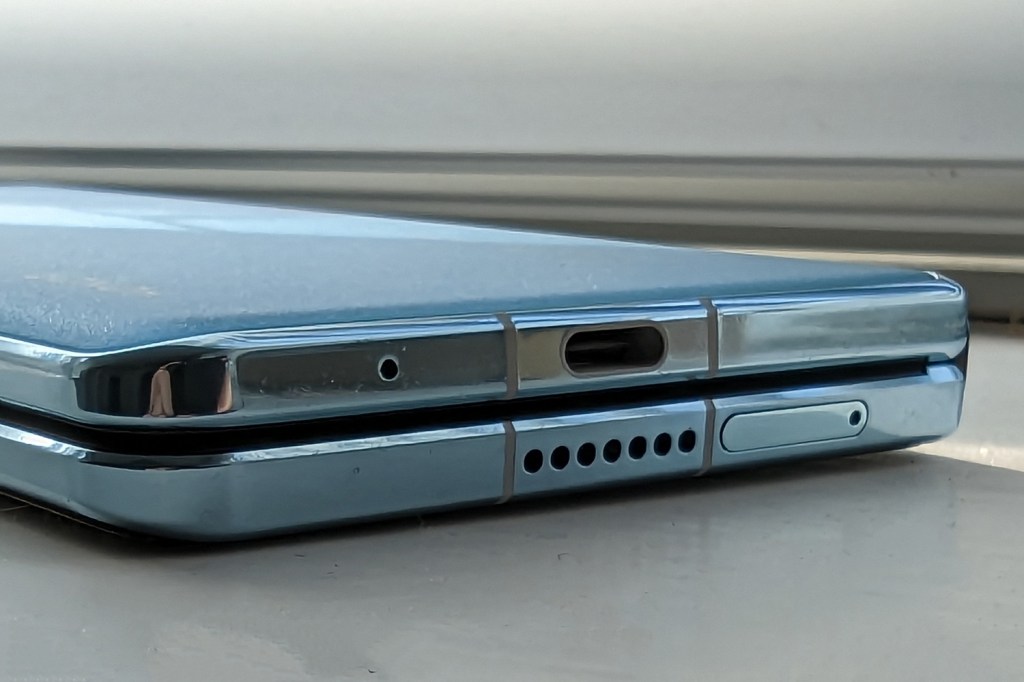
At 5000mAh, you’re getting a 10% increase in battery capacity over the outgoing Honor Magic V, and puts the Magic Vs on par with traditional flagship phones. Watching YouTube non-stop on the larger internal display, we saw between eight and ten hours before needing to plug in, but that’s not a typical use case for a foldable.
Mainly using the outer screen for social scrolling, taking photos, making calls and a bit of gaming will let you last all day, even once you add some video playback or web browsing on the inner display into the mix. That puts it above the Galaxy Z Fold 4, which we found could need its power saving mode to make it through to bedtime.
There’s no wireless charging, which might come as a disappointment to some, but at least wired charging is suitably rapid. The phone tops out at 66W, and Honor includes a power brick in the box. A full top-up takes less than an hour, with a quick 20 minute pitstop usually good for at least 50%.
Honor Magic Vs cameras: not short on sensors
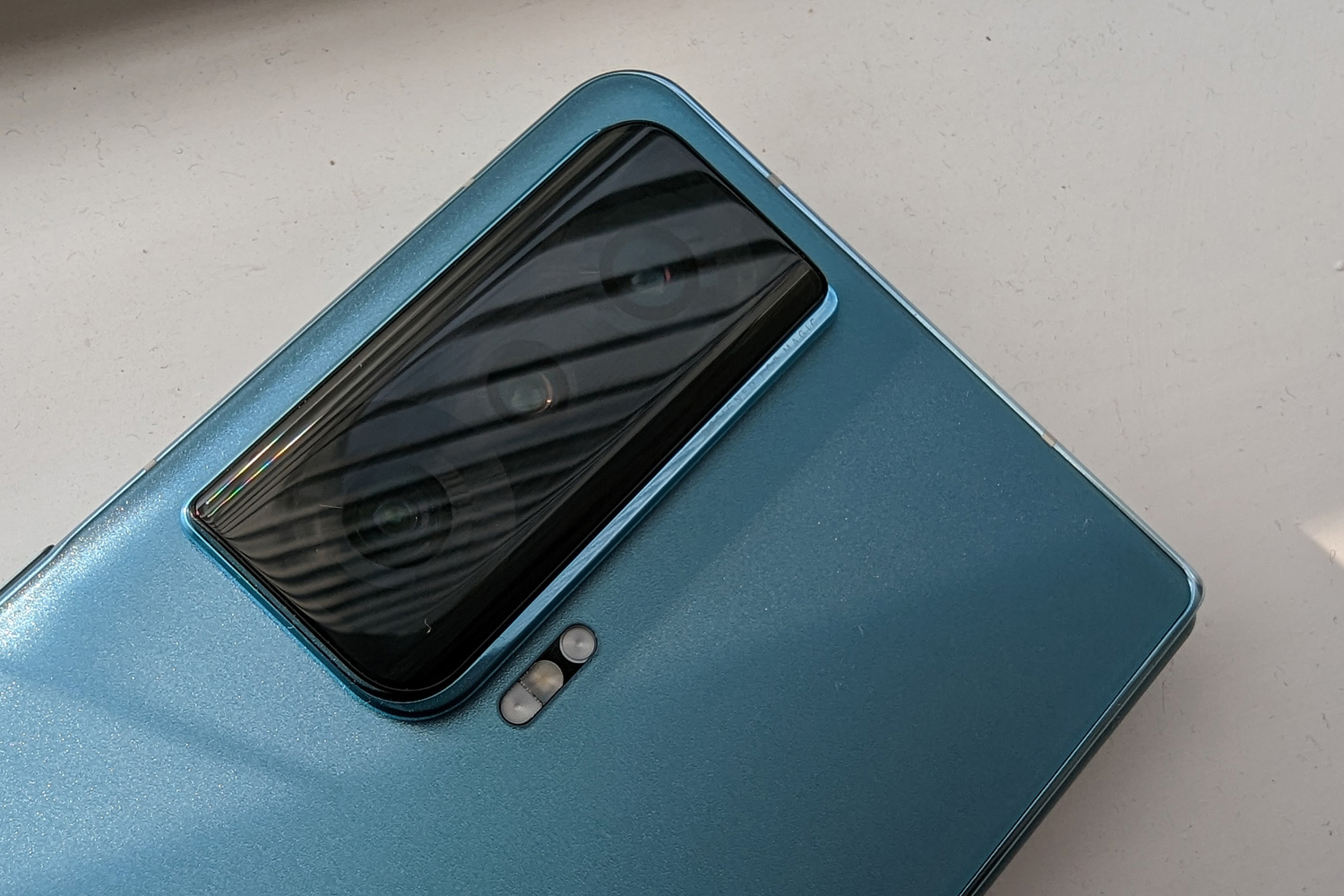
The Magic Vs has the sort of camera hardware you’d expect from a folding flagship: a 50MP main snapper with an f/1.9 aperture lens and sizeable Sony sensor for capturing plenty of light, plus two more cameras playing supporting roles.
The first is a 50MP, f/2.0 ultrawide with a 122-degree field of view. That’s a fair bit wider than some rivals, and means you can fit an impressive amount into every shot. In some cases we actually found it too wide, effectively zooming so far out from our subjects they got lost amongst the wider scene, although the camera app lets you digitally zoom between 0.5x and 1x to compensate. It’s not brilliant at preserving detail, though, and colours aren’t consistent with the main lens.
An 8MP telephoto with 3x optical zoom and an f/2.4 aperture lens completes the set. That isn’t an especially high pixel count, and it shows in anything other than (very) good light. There’s lots of digital smoothing going on, and again it doesn’t pack in an awful lot of detail.
The main lens puts in a better showing, taking convincing enough pictures in daylight conditions. Exposure is usually well-judged, there’s no shortage of surface detail, and it doesn’t overly sharpen each shot to achieve it. We did think it could go overboard with HDR in particularly bright scenes: pictures would have more shadow detail than we managed from rival phones, but were less true-to-life as a result. Start peeking at pixels and it doesn’t have the outright clarity of the very best handsets, either, but the natural-looking colours still have plenty of impact. It’s also a step behind Honor’s fantastic Magic 5 Pro, despite costing more.











At night we felt the lack of image stabilisation on the main lens, with shots needing a very steady hand to avoid camera shake and blurry elements. Exposure is well balanced and colours appear natural, but detail can be hit or miss. The telephoto performs better on this front, thanks to built-in OIS, but can be thrown off by brighter light sources. Colours are largely convincing, but software is doing a lot of the heavy lifting to eliminate noise. Results can look over-processed as a result.
There are also two punch-hole selfie cams: one on the outer screen and another on the inner one. They’ve both got 16MP sensors and are perfectly fine for video calls.
The Magic Vs is an alright performer in the foldable world, but a significant step back from the very best phones for photography.
Honor Magic Vs verdict
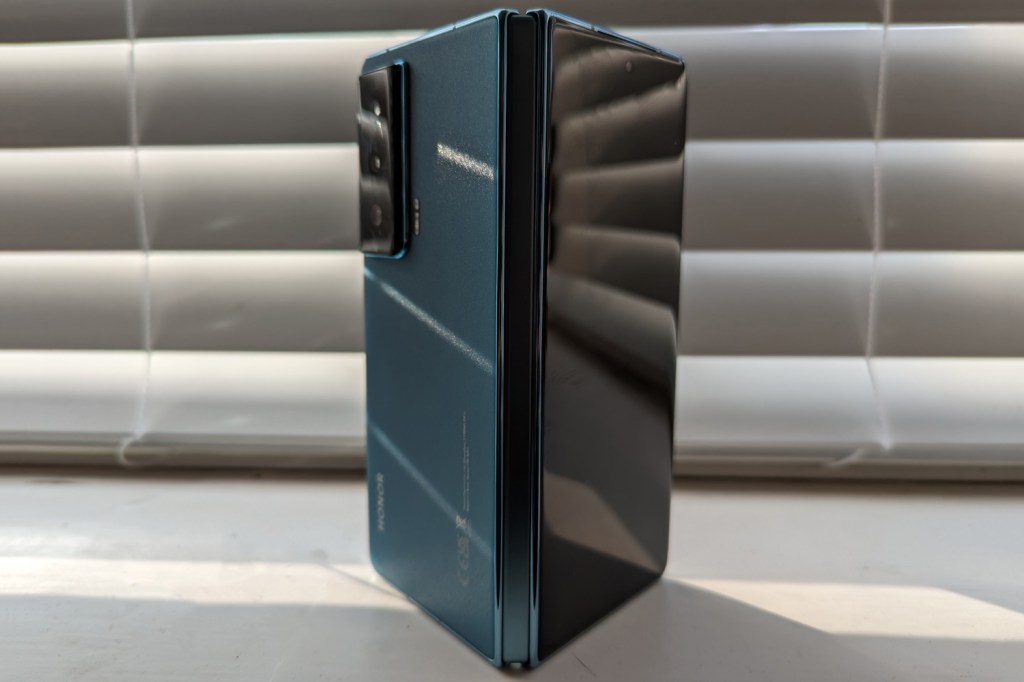
With properly premium looks, a respectable main camera for a foldable and convincing battery life, the Honor Magic Vs could be a contender in the folding phone world. Samsung should be taking note, and everyone else has some real catching up to do on the hardware front. It also proves Honor has successfully escaped the budget/entry-level niche it used to be pigeonholed in, and stepped out of the shadow of former owner Huawei.
Its secondary snappers are weaker, though, and even the main sensor can’t compete with similarly-priced traditional phones for quality. Honor has work to do on the software front. The last-gen processor only gets a short shelf life before the competition arrives with newer silicon – albeit at a higher price – and there are a few missing features we’d expect from such a premium product, like wireless charging and water resistance.
Their absence is reflected in the price, though: there’s not a book-style foldable around that’s cheaper than the £1399 Magic Vs (sorry, US readers – like other Honor phones, there’s no indication it’ll go on sale in America). For anyone wanting a folding phone that doesn’t require a bank loan, it might be worth accepting a few compromises.
Stuff Says…
High-end folding hardware at a great price, but the Magic Vs makes compromises to keep costs low and deserves a better software experience.
Good Stuff
Slim design that folds completely flat
Main camera competitive with other foldables
Very keenly priced for a folding phone
Bad Stuff
Software still needs work
Secondary cameras a step behind
Missing some flagship features
Last-gen CPU
Honor Magic Vs technical specifications
| Screen | 7.9in, 2272×1984 folding OLED w/ 90Hz, HDR10+ 6.45in, 2560×1080 OLED w/ 120Hz, HDR10+ |
| CPU | Qualcomm Snapdragon 8+ Gen 1 octa-core |
| Memory | 8GB RAM |
| Cameras | 50MP, f/1.9 main w/ PDAF + 8MP, f/2.4 telephoto w/ OIS, PDAF, 3x optical zoom + 50MP, f/2.0 ultrawide rear 16MP, f/2.5 front / 16MP, f/2.5 inner |
| Storage | 256GB on-board |
| Operating System | Android 13 w/ Magic UI 7 |
| Battery | 5000mAh, 66W wired charging |
| Dimensions | 160x142x6.1mm (unfolded) / 160x73x12.9mm (folded), 261g |



